
- View
Table of Contents
ToggleSpeķa pīrāgi are a staple of Latvian cuisine, wrapped in both tradition and comfort. These golden brown pastries filled with savoury bacon and onion are more than just a snack; they’re woven into the rhythms of daily life and celebration across the country.
At weddings, festivals or even quiet evenings at home, you’ll often find a basket of pīrāgi on the table. Their warm, buttery aroma draws people together, offering a taste of something familiar, homemade and deeply rooted in Latvian identity.
Want to dive deeper into Latvian Cuisine? Don’t miss our post on 17 Traditional Latvian Foods to Try
What Is Speķa pīrāgi?
Speķa pīrāgi are small crescent shaped buns made from yeasted dough and traditionally filled with finely chopped fatty bacon and onion. Each one is shaped by hand and brushed with egg before baking to a perfect golden sheen.
These buns are often eaten warm, but they are just as enjoyable at room temperature, making them a popular choice for picnics or road trips. The outer crust is soft and slightly chewy, while the inside bursts with salty, smoky richness.
Pīrāgi are typically made in large batches, often as part of family rituals passed down through generations. In Latvian homes, baking these buns is as much about preserving tradition as it is about preparing food.
Ingredients and Taste
The dough is enriched with milk, butter, flour and yeast, resulting in a soft yet structured bite. Once baked, it forms a tender shell that holds the savoury filling without becoming too heavy or dense.
The filling usually includes fatty pork or smoked bacon, finely chopped onion and a touch of black pepper. This simple combination delivers a satisfying contrast of textures and a rich, savoury taste in every bite.
The flavour of Speķa pīrāgi is deeply comforting, defined by the balance of buttery dough and smoky, salted pork. The onions mellow during baking, lending just enough sweetness to round out the filling.
Some variations include a touch of caraway or different meats depending on the region or household. However, the classic bacon and onion filling remains the most iconic and loved version throughout Latvia.
A Taste of History
The roots of Speķa pīrāgi run deep in Latvian culture, dating back to times when households relied on preserved pork to get through long, harsh winters. These buns were a practical way to stretch ingredients and create filling, portable meals.
Over time, pīrāgi became closely tied to seasonal holidays like Jāņi, the midsummer festival, where they are still baked in great numbers. They are also featured in Christmas and name day celebrations as symbols of hospitality and abundance.
Baking pīrāgi was traditionally a communal effort, often involving multiple generations gathered around the kitchen table. The process was just as important as the product, reinforcing family bonds and cultural memory.
Today, Speķa pīrāgi remain a beloved part of Latvian life. Whether made by hand in a countryside kitchen or bought fresh from a bakery in Riga, they carry the flavours of home, the weight of history and the comfort of continuity in every bite.

Latvian Speķa pīrāgi (Bacon Buns)
Ingredients
For the dough:
- 250 ml warm milk
- 7 g active dry yeast
- 1 tbsp sugar
- 500 g plain flour plus extra for kneading
- 1 tsp salt
- 1 egg
- 60 g unsalted butter melted
For the filling:
- 200 g streaky bacon finely chopped
- 1 small onion finely chopped
- Freshly ground black pepper to taste
For brushing:
- 1 egg beaten, for glaze
Instructions
- To begin, preheat your oven to 190°C (fan 170°C). In a large bowl, combine warm milk, sugar and yeast. Stir gently and let it sit for 10 minutes until the surface becomes frothy. This activates the yeast and ensures a light dough.
- Add the egg, melted butter and salt to the yeast mixture. Gradually sift in the flour while mixing with a wooden spoon or using your hands. Once the dough comes together, knead on a floured surface for about 8 minutes until it becomes smooth and elastic.
- Place the dough in a clean, lightly oiled bowl. Cover it with a damp cloth or cling film and leave it in a warm place for about 1 hour or until it doubles in size. Rising time may vary depending on room temperature, so be patient.
- While the dough rises, prepare the filling. In a dry frying pan over medium heat, cook the chopped bacon until some fat is released. Add the chopped onion and sauté together for 5 to 7 minutes until soft and golden. Season with black pepper and allow to cool.
- Once the dough has risen, punch it down gently to release the air. Roll it out on a lightly floured surface to about 5 mm thick. Use a round cutter or glass (around 8 to 10 cm in diameter) to cut out circles.
- Place a small spoonful of the bacon and onion mixture in the centre of each dough circle. Fold over to create a half moon shape and press the edges firmly to seal. For a traditional look, pinch the edge decoratively or crimp with a fork.
- Arrange the filled buns on a baking tray lined with parchment paper, leaving space between each. Cover with a clean tea towel and let them rest for another 20 minutes to allow a second gentle rise, which ensures a soft interior.
- Brush each bun generously with beaten egg. This gives the buns their signature golden, glossy crust once baked. Optionally, sprinkle a pinch of caraway seeds for an authentic regional touch.
- Place the tray in the centre of the preheated oven and bake for 20 to 25 minutes, or until the buns are golden and lightly crisped on top. Rotate the tray halfway through if your oven browns unevenly.
- Remove the buns and allow them to cool slightly on a wire rack. Serve warm or at room temperature. Speķa pīrāgi pair beautifully with a bowl of soup or a strong black tea. For gatherings, arrange them in a basket lined with linen to preserve warmth and softness.


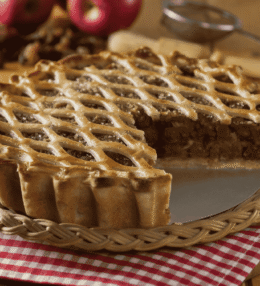
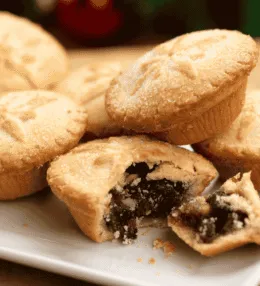
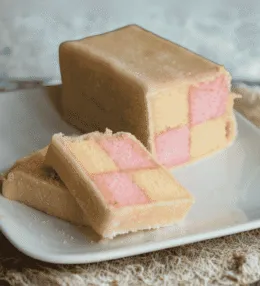
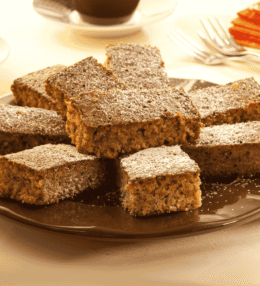
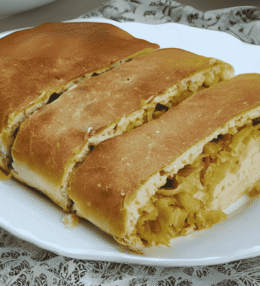
Leave a Review